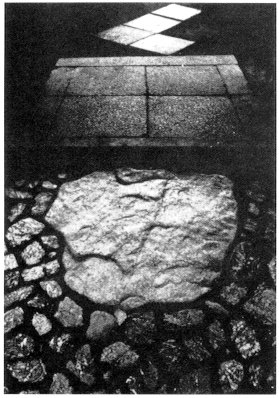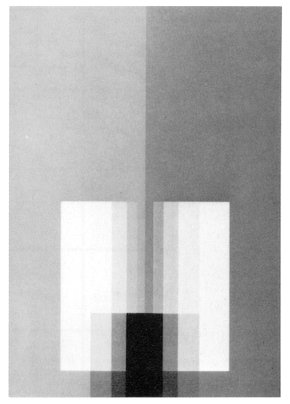|
As shown in Figure 279, the garden stones in the upper screen are cut off geometrically and arranged geometrically, too, while the stones in the lower screen do not have fixed shapes, and are organized respecting the image of the stone naturally placed. In other words, not only the KOHSEI (Basic Art & Design) with the artificial principle and KOHSEI (Basic Art & Design) with the naturalism simply create contrast on the shapes but also a strong change which contains qualitative contrast is expressed. Despite of all the above, the reason why the shapes on the screen look unified is possibly due to the use of the common material of stone. · In Figure 280, a strong contrast in the complementary colors facing opposite in the left and right sides is expressed. This work is also a typical example of "expression using a progression". The intervals of the horizontal dividing lines varies as a geometrical progression. The intervals of the vertical dividing lines also varies as a progression. There is a mirror symmetrical axes in the center, which ensures a strong "symmetry". The symmetry is an important principle in the arts
and designs, and there are many kinds of symmetries, which will be discussed
in the next section.
|

